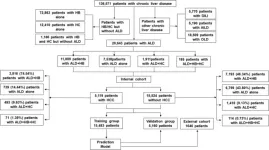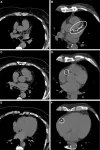(Press-News.org) A novel screening system developed at Kyoto University enables researchers to investigate sperm cell development and health at the molecular level. The new approach, published in Cell Genomics, promises breakthroughs in male contraception and infertility treatments.
The study, led by Professor Jun Suzuki of the Institute for Integrated Cell-Material Sciences (iCeMS), addresses a critical gap by directly targeting genes within testicular cells inside living organisms. Utilizing a genetic tool called CRISPR, which can be likened to genetic scissors, the researchers developed a method to investigate which genes contribute to healthy sperm production in living animals. Until now, this had mainly been done in cells cultivated in the laboratory. The researchers randomly disrupted genes by developing a method to introduce a collection of genetic tools in lentivirus into testicular cells in testes at high efficiency. Through this method, the researchers made it possible to analyze the effects of targeted genes on specific biochemical reactions in the sperm cells, such as the movement of lipids (fats) in cell membranes.
Using the method, the team focused on sperms with defective capacitation, a process through which sperms become capable of fertilizing an egg. They identified these sperms by measuring how much calcium they absorbed. By using this method in live animals, they were able to identify a specific gene, Rd3, as being crucial for maintaining sperm cell health, particularly during sperm cell development. Despite Rd3’s previous association with eye function, the team found it is also highly active in round sperm cells, an early stage in sperm production, and that it plays a significant role in regulating sperm health. This discovery was made possible by examining how Rd3 interacts with mitochondria, structures responsible for energy production within cells.
To further understand Rd3's function, Suzuki and his colleagues developed Hub-Explorer, a computational tool that revealed Rd3's impact on regulation of oxidative stress—a condition linked to cellular damage. Rd3's role in regulating oxidative stress revealed its significance in maintaining sperm integrity during development.
“While women have many available birth control options, choices for men remain limited,” says Noguchi, a first author of this paper. “This new screening method holds promise by aiding the discovery of key molecules, potentially leading to new birth control options and infertility therapies for men.”
“These discoveries not only advance our understanding of sperm cell development but also demonstrate the potential to uncover mysteries in different biological processes,” adds Suzuki. “The method can also be applied to other tissues, potentially expediting the development of drugs for a wide range of diseases.”
Despite these advancements, challenges remain. The researchers observed a gradual decline in the number of cells with targeted genes, suggesting room for improvement. They are currently exploring alternative approaches to enhance the effectiveness of their technique, and they plan to apply it to investigate various biological processes and diseases in other areas of the body.
###
Paper:
“In vivo CRISPR screening directly targeting testicular cells”
Cell Genomics
About Kyoto University’s Institute for Integrated Cell-Material Sciences (iCeMS):
At iCeMS, our mission is to explore the secrets of life by creating compounds to control cells, and further down the road to create life-inspired materials.
https://www.icems.kyoto-u.ac.jp/
For more information, contact:
Christopher Monahan / I. Mindy Takamiya
cd@mail2.adm.kyoto-u.ac.jp
END
Toward understanding sperm quality
A novel method for studying genes in testicular cells of living animals could lead to breakthroughs in male contraception and fertility treatments.
2024-03-05
ELSE PRESS RELEASES FROM THIS DATE:
Game-changing sensor unveiled for spotting chemical threats
2024-03-05
Scientists have unveiled a groundbreaking sensor that can wirelessly detect chemical warfare agents, marking a significant leap in public safety technology. This innovative device, capable of identifying substances like dimethyl methylphosphonate (DMMP), offers a new level of efficiency and reliability in monitoring and responding to chemical threats, without the need for direct power sources or physical connections.
The urgent need for advanced detection of chemical warfare agents (CWAs) to ensure global security has led to the development of a novel gas sensor. This sensor is distinguished ...
The many faces of a zinc anode: Configurations can make a difference in performance
2024-03-05
Sometimes the solution to a problem can be as simple as changing the way the components are structured
Researchers have proposed a reconfiguration of zinc anodes, a component of renewable energy sources, to help improve the battery and reduce the reliance society has on fossil fuels. The potential that different configurations of a zinc anode can have could reduce costs and side reactions while increasing the safety of the rechargeable zinc metal battery (RZMB) and, of course, improve its “green” rating.
The results were published in Energy Materials and Devices ...
Team successfully synthesizes atomically precise metal nanoclusters
2024-03-05
A research team has successfully synthesized a metal nanocluster and determined its crystal structure. Their study provides experimental evidence for understanding and designing nanoclusters with specific properties at the atomic level. Metal nanoclusters have wide-ranging applications in the biomedical field.
Their work is published in the journal Polyoxometalates on February 6, 2024.
Scientists have shown interest in ligand-protected atomically precise metal nanoclusters because they have definite atomic structures and exceptional ...
Rising alcohol-related liver cancer prompts new prediction tool
2024-03-05
Liver cancer, unfortunately, is the sixth most common cancer and the third most frequent cause of cancer-related death globally. However, its distribution and causes vary greatly across different regions. While areas like Eastern Asia and sub-Saharan Africa see the most cases, the reasons behind them differ significantly.
In high-income countries, liver cancer has been on the decline thanks to widespread newborn hepatitis B vaccination and antiviral drugs. Meanwhile, low-income countries witness a worrying rise, ...
Sprinting ‘like a jet’ will produce Premier League strikers of tomorrow
2024-03-05
Sprinting “like a jet plane taking off” will help produce Premier League star strikers of tomorrow, new research has revealed.
A University of Essex study of Tottenham Hotspur’s academy has shown that just a few words can instantly boost sprinting speed by 3 per cent over 20 metres.
It would normally take weeks of targeted training to achieve such a large increase.
These short bursts of acceleration are largely seen in goal-scoring situations and could be the difference in beating a defender and finding the net.
Dr Jason Moran, from the School of Sport, Rehabilitation and Exercise Sciences, discovered simple analogies increased ...
Coronary artery calcium score predictive of heart attacks, strokes
2024-03-05
OAK BROOK, Ill. – Coronary artery calcium scoring with CT can identify symptomatic patients with a very low risk of heart attacks or strokes, according to a new study published today in Radiology, a journal of the Radiological Society of North America (RSNA). Researchers said the findings may one day help some patients with stable chest pain avoid invasive coronary angiography.
Coronary artery calcium scoring with CT was developed to noninvasively measure the amount of calcium in the arteries of the heart. Higher scores are linked with atherosclerosis, a buildup of plaque in the arteries. A score of 1 to 399, for instance, suggests a moderate amount of plaque, while 400 ...
Harvard neuroscientist Haim Sompolinsky awarded Brain Prize
2024-03-05
Haim Sompolinsky, Professor in Residence in Harvard’s Department of Molecular and Cellular Biology and Department of Physics, has received the Brain Prize for his pioneering contributions to computational and theoretical neuroscience.
Considered the world’s most prestigious prize for neuroscience research, the Brain Prize 2024 is shared by Sompolinsky, Larry Abbott of Columbia University, and Terrence Sejnowski of the Salk Institute. All three scientists have helped uncover key principles governing the brain’s structure, ...
Smoking during pregnancy may increase the risk of behavioral disorders in newborns, predicts AI
2024-03-05
Although several studies have linked smoking during pregnancy with neurodevelopmental disorders, the results of behavioral experiments in mice prenatally exposed to nicotine have been inconsistent. In a recent study, scientists from Japan developed a deep learning-based framework to automatically observe and classify mice behavior in such experiments, producing more accurate and unbiased results. They show that prenatal exposure to nicotine could increase the risk of autism spectrum- and attention deficit/hyperactivity disorders in newborns.
The fact that smoking is a risk factor for several diseases, including cancer, stroke, and diabetes, has been known for approximately ...
Dive into the future of molecular life sciences at #DiscoverBMB 2024
2024-03-05
Which natural products are helping solve biotech challenges? How can enzymes supercharge biodegradation for a greener tomorrow? What role does RNA play in cancer and other diseases? You’ll find the answers to these questions and more at Discover BMB, the annual meeting of the American Society for Biochemistry and Molecular Biology, to be held March 23–26 in San Antonio.
Secure your front-row seat to cutting-edge findings, approaches and technologies in the biological sciences by registering for a complimentary ...
Call for articles: Trends in Peace and Sustainability
2024-03-05
The Network for Education and Research on Peace and Sustainability (NERPS) at Hiroshima University is inviting submissions for Trends in Peace and Sustainability (TRENDS), an innovative academic platform dedicated to exploring the complex interplay between peace and sustainability. TRENDS aims to become a forum for scholars, professionals, and advocates to share their research, insights, and viewpoints on the pursuit of peace amid sustainability challenges. It aims to promote interdisciplinary engagement, stimulating conversation ...
LAST 30 PRESS RELEASES:
Numbers in our sights affect how we perceive space
SIMJ announces global collaborative book project in commemoration of its 75th anniversary
Air pollution exposure and birth weight
Obstructive sleep apnea risk and mental health conditions among older adults
How talking slows eye movements behind the wheel
The Ceramic Society of Japan’s Oxoate Ceramics Research Association launches new international book project
Heart-brain connection: international study reveals the role of the vagus nerve in keeping the heart young
Researchers identify Rb1 as a predictive biomarker for a new therapeutic strategy in some breast cancers
Survey reveals ethical gaps slowing AI adoption in pediatric surgery
Stimulant ADHD medications work differently than thought
AI overestimates how smart people are, according to HSE economists
HSE researchers create genome-wide map of quadruplexes
Scientists boost cell "powerhouses" to burn more calories
Automatic label checking: The missing step in making reliable medical AI
Low daily alcohol intake linked to 50% heightened mouth cancer risk in India
American Meteorological Society announces Rick Spinrad as 2026 President-Elect
Biomass-based carbon capture spotlighted in newly released global climate webinar recording
Illuminating invisible nano pollutants: advanced bioimaging tracks the full journey of emerging nanoscale contaminants in living systems
How does age affect recovery from spinal cord injury?
Novel AI tool offers prognosis for patients with head and neck cancer
Fathers’ microplastic exposure tied to their children’s metabolic problems
Research validates laboratory model for studying high-grade serous ovarian cancer
SIR 2026 delivers transformative breakthroughs in minimally invasive medicine to improve patient care
Stem Cell Reports most downloaded papers of 2025 highlight the breadth and impact of stem cell research
Oxford-led study estimates NHS spends around 3% of its primary and secondary care budget on the health impacts of heat and cold in England
A researcher’s long quest leads to a smart composite breakthrough
Urban wild bees act as “microbial sensors” of city health.
New study finds where you live affects recovery after a hip fracture
Forecasting the impact of fully automated vehicle adoption on US road traffic injuries
Alcohol-related hospitalizations from 2016 to 2022
[Press-News.org] Toward understanding sperm qualityA novel method for studying genes in testicular cells of living animals could lead to breakthroughs in male contraception and fertility treatments.







